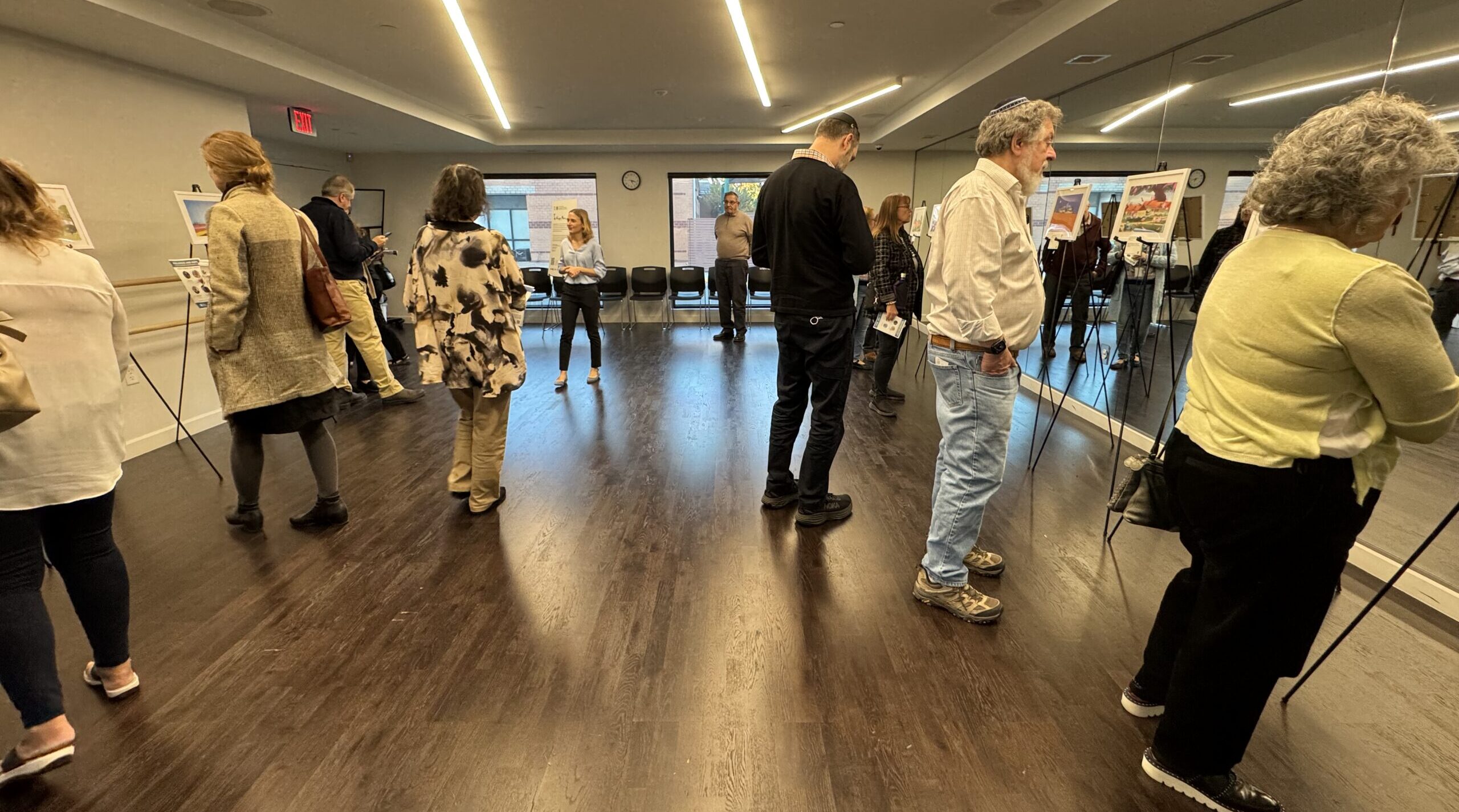Grief lingers in the shadow of Oct. 7.
There’s no linear path to healing. Along the way, as bumpy and crooked as that path may be, there’s a bright spot: community. People stay by our sides, supporting us as we navigate through moments of pain and vulnerability, and because of that, there’s an undeniable strength that emerges from being in community.
We, Jewish Northern Virginia, are on that path now.
As three Israeli national days approach, Yom HaShoah (Holocaust Remembrance Day), Yom HaZikaron (Israel Memorial Day), and Yom HaAtzmaut (Israel Independence Day), Pozez JCC is creating space for remembrance, healing, and hope.
These Yoms (days), which follow each other in close succession, invite a powerful journey from sorrow to celebration. They ask community members to remember the Holocaust, honor the lives of fallen Israeli soldiers and victims of terror, and then celebrate the miracle of Israel.
“You’re both being grateful for what you have, but at the same time, always remembering the price you have to pay,” says Dean Bagdadi, the JCC’s shaliach (Israeli emissary), who returned to IDF reserve service after October 7. “We try to bring that same emotional duality, the grief and gratitude, into our community here every year.”
This spring, Pozez JCC is hosting a thoughtful series of events to mark the Yoms.
Community members, through Zikaron BaSalon, have already been gathering in homes, having in-depth discussions about how the Holocaust affected their own families and hearing firsthand accounts from survivors.
To come, there will be music-filled memorial ceremonies, a comedy night with American-Israeli comedian Joel Chasnoff, and a cooking demo led by Israeli chef Nissimmi Naim Naor. Each event is intended to hold space for tears, laughter, conversation, and connection.
The events also acknowledge another difficult reality: rising antisemitism and Holocaust denial.
“We’re seeing what I’d call Holocaust inversion, where the memory of our suffering is being turned against us,” says Ryan Gardiner, JCC board member and chair of the Israeli Committee. “Fostering memory, keeping it alive, that’s more important now than ever.”
Gardiner thought back to being in Israel for the Yoms in 2010, when he was deployed with the Navy. On Yom HaZikaron, the entire country paused for two minutes of silence, a moment he remembers as “haunting and beautiful.” Traffic came to a halt. Friends stopped chatting. There was just silence.
“The country stops – cars, people, everything. You feel the unity,” he said.
But the Yoms are also about resilience. About holding onto joy. And about showing up for one another.
A community favorite, the Taste of Israel festival, will return with food, music, and activities for all ages on Sunday, May 4 at Gesher Jewish Day School in Fairfax.
“It’s an opportunity to show the vibrancy of Israeli culture,” Dean said. “It’s not just about the pain. Israelis are joyful people. We dance. We laugh.”
One of the festival crafts will give children an opportunity to make red flowers, the kind that bloom across Southern Israel, especially near the Gaza envelope, the area hit hardest on October 7.
“Those flowers have become a symbol,” Bagdadi said. “Not just of loss, but of life. A symbol that we will rebuild. That we are rebuilding.”
For Amy Lummer, the J’s Family Engagement Director, the events are about meeting people where they are.
“Some people know these holidays intimately. Others are hearing about them for the first time,” she says. “But no matter where you are on your journey, we want you to feel welcomed, seen, and proud of who you are.”
Northern Virginia is home to a large Israeli population, many of whom long for the communal experience of these holidays.
“People are really looking for a community that feels safe, secure, and embracing. That’s what we’re trying to provide at the J,” says Brett Isserow, JCC Board President. “For Israelis especially, the Yoms are one of those rare moments where they can come together and have conversations with others who share a deeper sensitivity and understanding, something they may not always find in their daily lives here in Northern Virginia.”
As the Jewish world continues to navigate fragility, Pozez JCC offers something powerful: a place to gather and belong. A place where memory lives, hope grows, and a connection to Israel binds people together with one story, one song, and one community event at a time.











